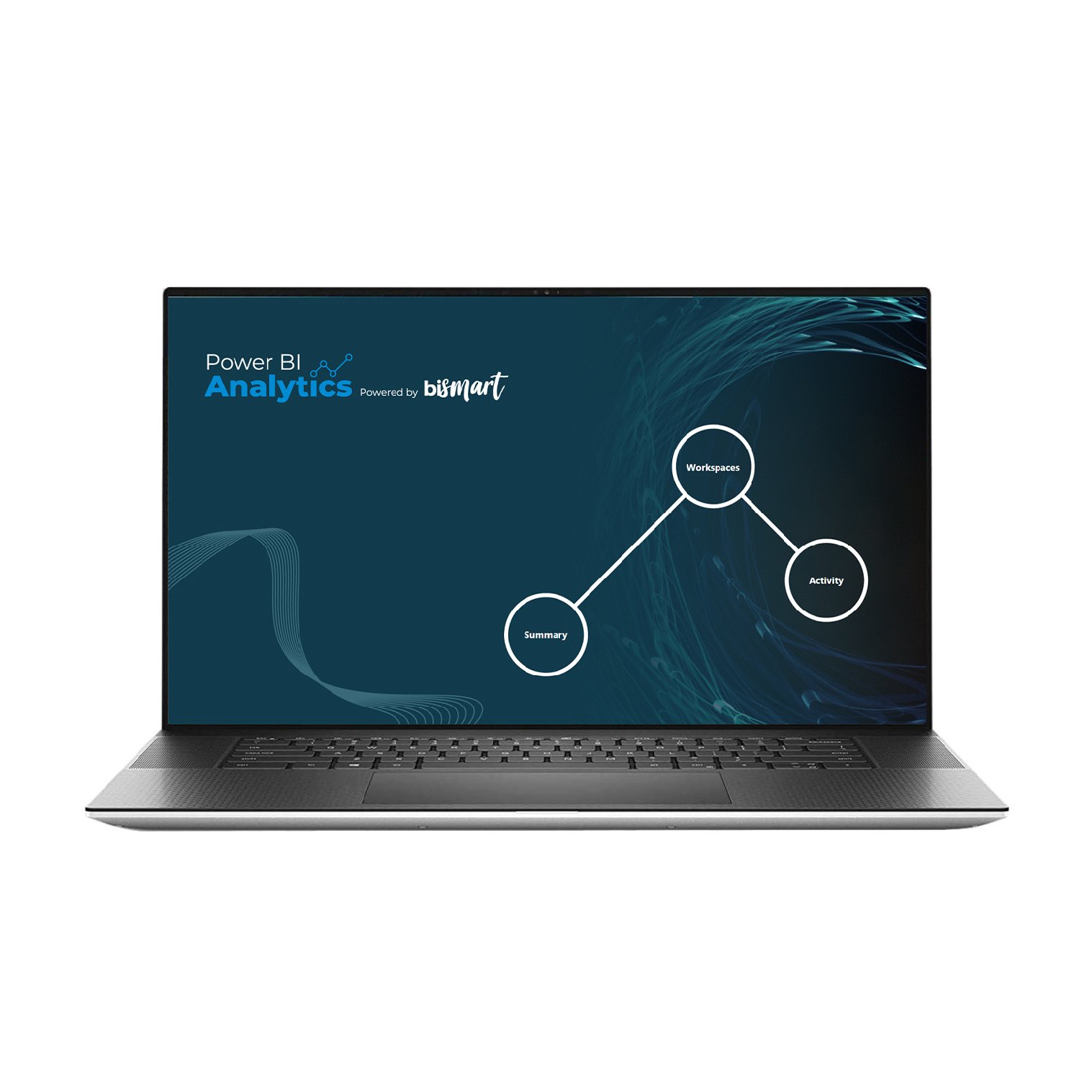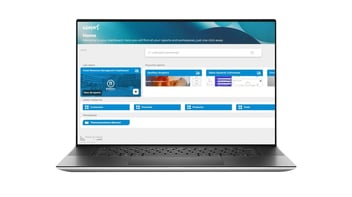Discover how to extract and analyze Power BI usage data without programming or interacting with the Power BI REST API. Download the guide!
For businesses relying on Power BI for data analysis and reporting, it's becoming increasingly important to track how their employees are using the platform and the reports generated within it. While this can be done by accessing Power BI’s REST API, it requires programming skills and technical know-how. But there’s an easier way.
Learn how to access Power BI usage data without the need for the Power BI API or any coding.
The Power BI API provides access to valuable usage metrics, allowing businesses to track and manage how users engage with the platform. in short, to improve their Power BI data governance.
However, interacting with Power BI's REST API demands significant technical skills and programming knowledge. As a result, many companies struggle to consistently monitor or analyze how their teams are actually using Power BI.
On top of that, the usage data provided by Power BI API is limited—it only covers the last 30 days, making it difficult to perform long-term analysis and draw meaningful insights over time.
But what if you could access Power BI usage data without any programming, and without the need for specialized technical expertise?
Sounds appealing? Keep reading! We’ll show you how you can seamlessly access and analyze Power BI usage data without ever touching the Power BI REST API or writing a single line of code.
How to Extract Usage Data without the Power BI API
Learn how to extract usage data from Power BI without time or space limits and without having to program in the Power BI REST API.
What is the Power BI API?
The Power BI REST API is a protocol developed by Microsoft that allows developers to access and interact with the Power BI platform through code.
In simple terms, an API (Application Programming Interface) is the standard used for exchanging data between different software applications.
What can you do with Power BI's REST API?
La API REST de Power BI ofrece acceso a una variedad de puntos finales que permiten a los programadores realizar múltiples tareas en la plataforma Power BI.
Por ejemplo, la Power BI API permite la integración de Power BI con otros sistemas, la personalización de informes y la automatización de tareas repetitivas.
Power BI's REST API provides access to a wide range of endpoints, enabling developers to perform several tasks within the Power BI platform.
For instance, the Power BI API allows seamless integration between Power BI and other systems, customization of reports, and automation of repetitive tasks. You can also optimize workflows by automating specific processes, such as creating, updating, or deleting reports and datasets.
Power BI's REST API can also be used to build custom applications that interact with the platform, giving users the ability to access, modify, or delete key elements such as datasets, reports, and Power BI dashboards.
Apart from that, developers can extract usage data from the Power BI API. However, performing these actions requires a deep understanding of programming.
The Power BI API can help you:
- Manage content: Using the Power BI API, companies can add, modify, or delete reports, datasets, and dashboards, improving content management efficiency.
- Admin operations: The Power BI REST API also enables programmers to manage users, roles, and permissions within the platform, ensuring that only authorized personnel can access certain reports. However, these features do come with limitations.
- Embed content: With the Power BI API, it’s possible to embed real-time visualizations into custom applications, providing dynamic and interactive reporting.
What usage data does the Power BI API offer?
Although the Power BI API provides access to valuable usage data that can transform how businesses manage and optimize their reports, accessing these metrics is no easy feat—it demands advanced technical skills and programming expertise.
Companies looking to analyze how users use Power BI often need to rely on developers who can interact with the Power BI REST API.
With the Power BI API, you can retrieve usage data such as:
- Most viewed visuals: Identifying the most popular charts and Power BI visuals in Power BI requires writing specific queries to the API. While this allows you to pinpoint which information is most relevant, it’s not something you can easily access without proper setup.
- Access frequency: Monitoring how often users access reports or dashboards involves working with Power BI’s usage metrics through custom code, a feature not readily available in the standard portal.
- Active users: The Power BI REST API provides data on how many users have interacted with reports over time.
- Time spent on reports: Measuring how much time users spend on a Power BI report requires programming specific interactions with the Power BI API and then interpreting the results, which can be complex for those unfamiliar with REST and JSON data manipulation.
- User interactions: Track actions such as applying filters, selecting elements, or exporting data.
- Devices and platforms: You can also gather insights into which devices or platforms are used to access reports.
- Geographic locations: The Power BI REST API stores data on the geographical locations from which users access reports.
- Errors and performance issues: Monitoring errors and performance problems, such as slow loading times, is also possible, but it requires setting up alerts through the API, adding an extra layer of technical complexity.
Power BI API: How to Extract Usage Data from Power BI
As mentioned above, extracting usage data from the Power BI API is a complex process that requires advanced programming knowledge, as it involves interacting with the Power BI REST API.
While Power BI’s API allows you to access usage metrics, it’s not a straightforward or easy task for users without technical expertise.
The Power BI API offers a way to extract valuable insights on how Power BI reports and dashboards are being used, but proper setup and API calls demand specialized skills.
How to Extract Usage Data without the Power BI API
Learn how to extract usage data from Power BI without time or space limits and without having to program in the Power BI REST API.
What are the requirements for the Power BI API?
To retrieve Power BI usage data and extract usage data through the Power BI API, certain conditions must be met:
-
Power BI Pro or Premium License: While the data covers all users, regardless of their license type, only those with a Power BI Pro or Premium Per User license can access this data.
-
Edit Permissions: You must have editing permissions for the report or dashboard from which you want to extract usage data. Without these permissions, you won't be able to interact with the Power BI API to retrieve the metrics.
-
Usage Metrics Activation: If you meet the previous requirements and still can’t access the metrics, it may be necessary for the Power BI administrator to enable the usage metrics option for content creators.
What are the limitations of Power BI API?
Although the Power BI API allows you to access a wide range of metrics and perform many operations within the platform, it has limitations regarding the timeframe and scope of the data available.
The Power BI API only provides usage data from the last 30 days, restricting your analysis to short-term insights, which might not be enough for businesses that need to perform more extensive or historical data analytics.
How to Extract Power BI Usage Data Without the API?
Como ya hemos explicado, consultar métricas de uso en Power BI mediante la API REST de Power BI implica hacer peticiones específicas a los puntos finales de la API. Este proceso requiere conocimientos avanzados en programación y el manejo adecuado de las solicitudes HTTP.
As we’ve explained, retrieving usage data through Power BI’s REST API involves making specific requests to API endpoints. This process requires advanced programming knowledge and the ability to handle HTTP requests properly.
However, there’s an alternative.
There is a platform exclusively designed so that companies can access, monitor, and analyze Power BI usage data without the need for coding or interacting with the Power BI API.
The platform, called Power BI Analytics, provides an easy and interactive way to access Power BI usage metrics without the technical hassle.
With Power BI Analytics, you don’t need any programming knowledge or reliance on developers to access your Power BI usage data!
Access Power BI Usage Metrics Without Coding Using Power BI Analytics
Power BI Analytics is an analytics platform designed for Power BI, allowing organizations to automatically and interactively access Power BI usage data without needing to interact with the API or involve technical experts.
With Power BI Analytics, any user can access and analyze usage metrics from their Power BI reports, along with additional information such as:
- Which users are accessing which reports, and for what purposes.
- A history of report endorsements (certifications).
- Analyzing license allocation by viewing distribution by type and tracking changes over time.
- Optimizing data lineage by visualizing relationships between different assets.
Overcome Power BI API Limitations
While Power BI Service provides some monitoring capabilities for reports, it’s limited to one month of usage data and only covers certain workspaces.
Power BI Analytics breaks through these limitations, offering a historical repository for Power BI usage data with no time restrictions. Through this solution, companies can analyze user activity in Power BI over any period, access detailed metrics, and compare trends over time to gain deeper insights into Power BI usage and performance.
Additionally, Power BI Analytics stores all data in a private repository for each organization, ensuring the security and privacy of your information.
Power BI Analytics Empowers Companies to Analyze Performance and Optimize Power BI ROI
With Power BI Analytics, companies can instantly see which reports their employees are working on, how frequently they’re being used, and identify the most popular Power BI reports.
- Identify unused reports that may be redundant and free up space.
- Maintain comprehensive control over reports, dashboards, data, and user profiles by centralizing Power BI management.
- Simplify data flow, optimizing data lineage for a more efficient and easier-to-manage system.
- Save time and prevent errors by tracking the status of data refreshes.
- Analyze the financial resources allocated to licenses, ensuring they are being used effectively.
- Reduce costs by eliminating unnecessary elements that aren’t being utilized, freeing up capacity.
In short, Power BI Analytics is a Power BI usage analytics solution designed to empower businesses to monitor activity and maximize productivity in Power BI.
How to Extract Usage Data without the Power BI API
Learn how to extract usage data from Power BI without time or space limits and without having to program in the Power BI REST API.




